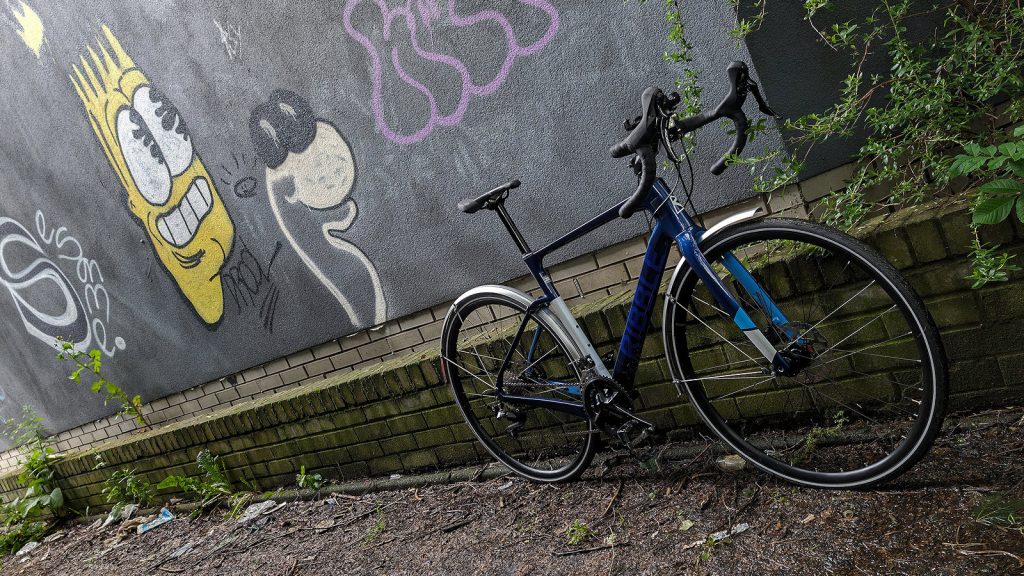I’ve decided to set myself a challenge, a quest, of sorts. That challenge is to create the perfect turfing bicycle. One that will be the most efficient, the most comfortable and the most capable for all the many and varied conditions encountered while turfing in and around my local patch in Midlothian, Scotland, and to infinity and beyond. Imagine you were to casually stroll into Mutts Cycles bicycle emporium in Newtongrange and ask for the perfect turfing bicycle, my good fellow. Of course, my good sir, come this way. I have just what you are looking for. Shall I put the kettle on?
The perfect turfing bicycle has a difficult job to do. Firstly, it needs to carry the turfer safely and preferably with some degree of comfort for both short and endurance turf sessions. It also needs to be mechanically reliable, work smoothly and efficiently, and also cope with an ever-changing variety of terrain, from rare billiard table smooth tarmac to potholed, cracked and ancient degraded tarmac. It should take you across the grassy parks, along disused railway lines, climb hills and bomb down then again and still be able to ride those teeth-chattering Edinburgh granite cobbles. Then there snow and ice, wet leaves, sticky mud, loose gravel and the frequent smelly doggy-do. Yes, turf bikes have a lot to deal with.
I’m off to a good start with my new bike, a Ribble CGR SL, fitted out with Shimano 105 bits and bobs. And I must say better than I expected as I thought a flat bar conversion from the drop bars would be my first task but it seems not. It’s fairly lightweight, very quick off the mark and much to my surprise, very comfortable to ride. I’ve already looked at the cockpit and have alternative handlebars on order. These will give me a 50 mm rise and more room for accessories. More on that in due course. By-the-way, as I write, Ribble Cycles still have some good discounts on bikes, if you are bike hunting.
The main topic I’ve been looking at are tyres. It was Scott at MuttsCycles who got me thinking again about this topic. He suggested I’d be better off with tyres around 40 mm rather than the 30 mm wide tyres I’m running at present. So, what did I do? I took to the Internet and read up on anything I could find about choosing the correct tyres. And the result of all this knowledge is that there is no such thing as the correct tyre. It’s always a compromise. There is no perfect one tyre does all.
There is always a trade off with bicycle tyres. Skinny tyres might be lighter and faster but are generally more uncomfortable. On rough terrain they may even be slower that a fatter tyre. Fat tyres can be slower in that they have more rolling resistance and also heavier, but you can gain time on the rough stuff as they allow you to go that little bit faster with more comfort. I think you’ll get the idea. Interestingly, when you start looking at the difference between, for example, a 30 mm wide tyre and a heavier 40 mm wide tyre, the differences are sometimes minimal. What is lost due to increased weight and added rolling resistance is gained by being able to ride rough ground that little bit quicker. The added comfort also helps to reduce fatigue, an important factor to my mind when turfing.
So, what plan have I come up with? Well, having recently retired the Surly Ogre, I have a set of good Schwalbe 700 x 35c Marathon Tour Plus tyres. These are basically heavy-duty expedition tyres with the 5 mm thick SmartGuard puncture protection belt and a fairly robust tread pattern. They are quite heavy, adding another 1kg to the bikes weight but you cannot have everything and they should last around 10,000 miles. Had I not already bought these I would probably have gone for Schwalbe 700 x 35 or 40c Marathon tyres.
These replace my Schwalbe 700 x 30c Marathon Racer tyres. The difference in size might only be 5 mm but the effect is quite marked. The tyre is considerably more comfortable than the Racer tyre, the deeper tread, more rubber and overalls size increase feel solid and planted. Yet, I didn’t notice any additional rolling resistance, though they are not built for speed, more for durability and bashing across mixed terrain. Will feedback again in due course. If you are looking for really nerdy stuff about tyres check out the Bicycle Rolling Resistance website.
So, where are we so far with my challenge is to create the perfect turfing bicycle? Well, the Ribble CGR SL is relatively lightweight, more comfortable than my other bikes, has a decent set of 12-speed gears (50/34 front, 11-36 rear) for those nasty Mayfield and Gorebridge hills, and the Wee Brae in Bonnyrigg, tyres are probably sorted but need some testing and the hydraulic brakes stop just fine but could be firmer at the lever (they have some air in them, so need bleeding). All that remains now is to get some miles under those wheels and decide on what how to carry stuff, in other words, bike luggage or stick with rucksack? More soon.
Copyright ©2024 Gary Buckham. All rights reserved.


